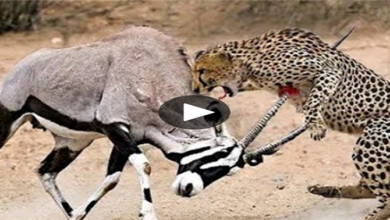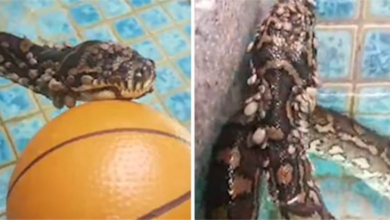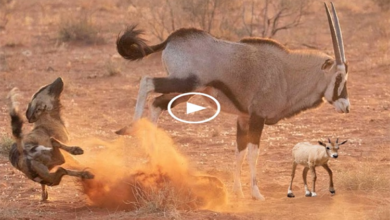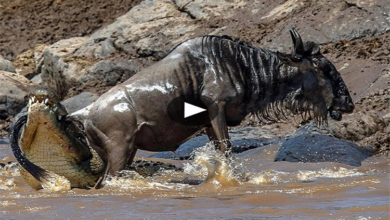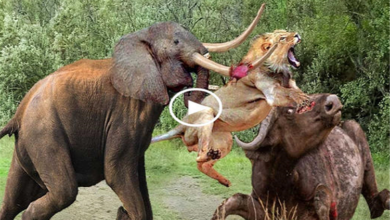The komodo dragon sneaked into the python’s den to steal eggs and was killed by the python using its strong muscles
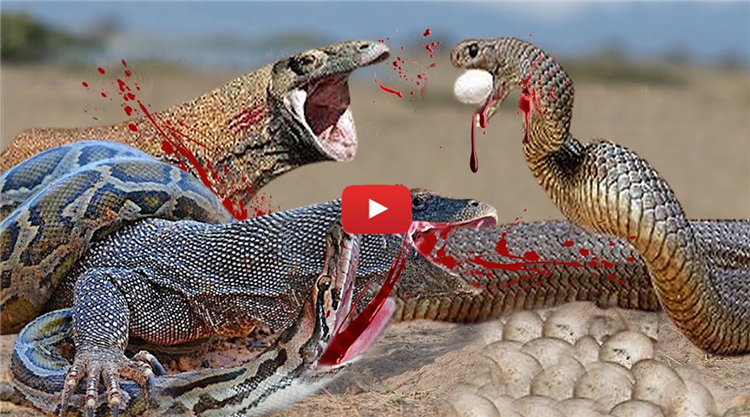
A Komodo dragon is concealed by shrubs and branches in the Indonesian jungle. The huge python was caring for its eggs in a desolate rock cave where the dragon was hiding. The dragon turned out to be highly cunning, intending to steal the python’s incubating eggs.
However, when the dragon was awkwardly gathering the eggs, the python realized the dragon was attempting to take his eggs and went back to the den. The dragon had little hope of escaping because the python was unyielding and swiftly encircled it.
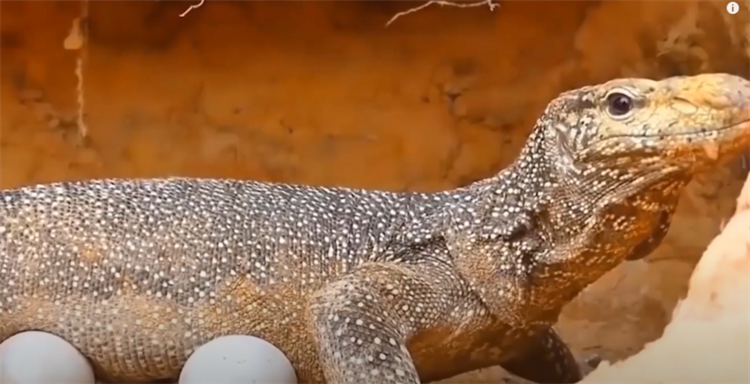
However, the Komodo dragon was unable to defeat the python. In the end, the dragon was immediately consumed by the python. Only the python’s spitting noise as it consumed its meal remained after this horrifying spectacle came to an end.
This is a blatant illustration of how cruel nature can be.
The Komodo dragon (Varanus komodoensis) is a large lizard found on the islands of Indonesia, including Komodo, Rinca, Flores and Gili Motang. A member of the genus Varanidae, and the largest lizard species left. existed until now, reaching a maximum length of 3 meters (10 ft) and weighing about 70 kilograms (150 lb).
Due to their size, these lizards dominate the ecosystem on the island they live on. Komodo dragons hunt and ambush prey including invertebrates, birds, and mammals. It is claimed that they are venomous; There are two glands in the lower jaw that secrete a number of toxic proteins. The biological significance of these proteins is controversial, but the glands have been shown to secrete anticoagulants. Komodo dragons’ group hunting practices are very special in the reptile world. The Komodo dragon’s diet is mainly Indonesian elk, although they also eat a considerable amount of carrion. Komodo dragons occasionally attack humans.

Mating season starts from May to August, laying eggs in September; up to 20 eggs at a time, they usually lay in abandoned jungle chicken nests or in self-dug burrows. Eggs are incubated for seven to eight months, hatching in April, when insects are most developed. Young Komodo dragons are vulnerable and therefore often reside in trees, safe from predators and cannibalistic adults. They take 8 to 9 years to mature and are estimated to live up to 30 years.
Komodo dragons were first recorded by Western scientists in 1910. Their large size makes them often kept in zoos. In the wild, their range has shrunk due to human activities, and they are listed as Vulnerable by the IUCN. They are protected under Indonesian law, and Komodo National Park was established in 1980 to support and protect it.
The Komodo dragon was first recorded by Europeans in 1910, when rumors of a “land crocodile” reached the ears of Lieutenant van Steyn van Hensbroek of the Dutch colonial government. Fame spread until 1912, when Peter Ouwens, director of the Zoological Museum in Bogor, Java, published an article on the subject after receiving a photograph and a pelt from the lieutenant, plus two other specimens from a collector.
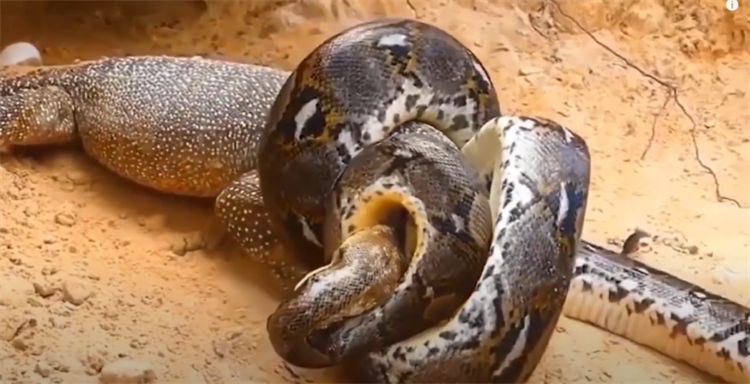
The first two living Komodo dragons brought to Europe were displayed in the Reptile House at London Zoo when it opened in 1927. Joan Beauchamp Procter observed them in captivity and she described their behavior at a scientific meeting of the Zoological Society of London in 1928.
The Komodo dragon was the driving force behind W. Douglas Burden’s expedition to Komodo Island in 1926. After returning with 12 preserved and two living specimens, this expedition inspired the series. 1933 film King Kong. Burden is also the one who coined the common name “komodo dragon”. Three of his specimens were stuffed and are still on display in the American Museum of Natural History.
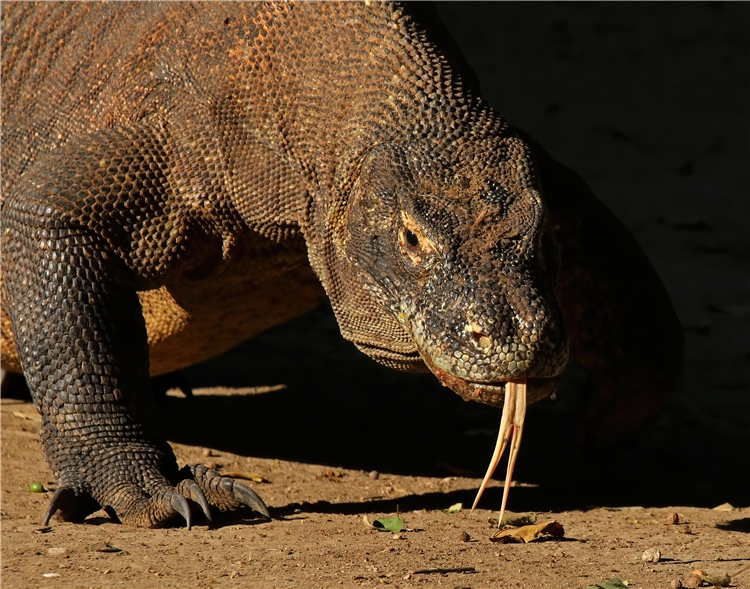
The Dutch authorities, recognizing the limited number of individuals in the wild, soon outlawed sport hunting and greatly restricted the number of individuals that could be taken for scientific research. Collection and exploration were halted during World War II, intermittently until the 1950s and 1960s, when studies observed the feeding behavior, reproduction, and body temperature of the animals. Komodo dragon. Around this time, a long-term expedition was planned. This expedition was entrusted to the Auffenberg family, who were on Komodo Island for 11 months in 1969. During their stay, Walter Auffenberg and his assistant Putra Sastrawan discovered and tagged more than 50 Komodo dragons. .
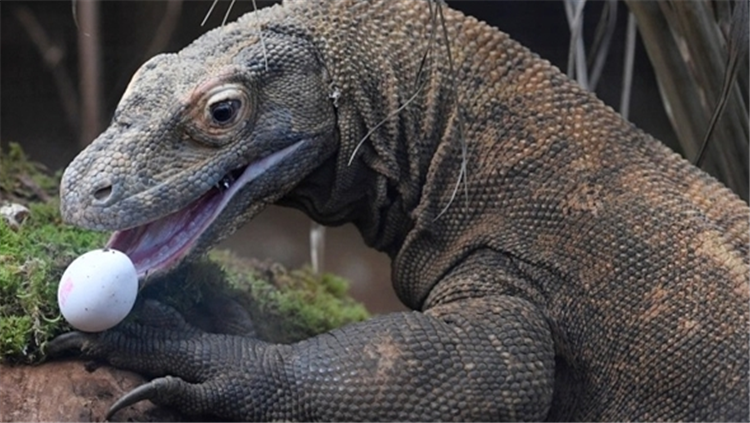
Research from Auffenberg’s expedition was enormously influential in keeping Komodo dragons in captivity. Subsequent research by the Auffenberg family shed more light on the nature of the Komodo dragon, with biologists like Claudio Ciofi continuing to study the creature.
In the scientific literature, the Komodo dragon is sometimes referred to as the Komodo monitor or Komodo island monitor, although this name is uncommon. To the natives of Komodo, it is known as ora, buaya darat (earth crocodile), or biawak raksasa (giant iguana).

